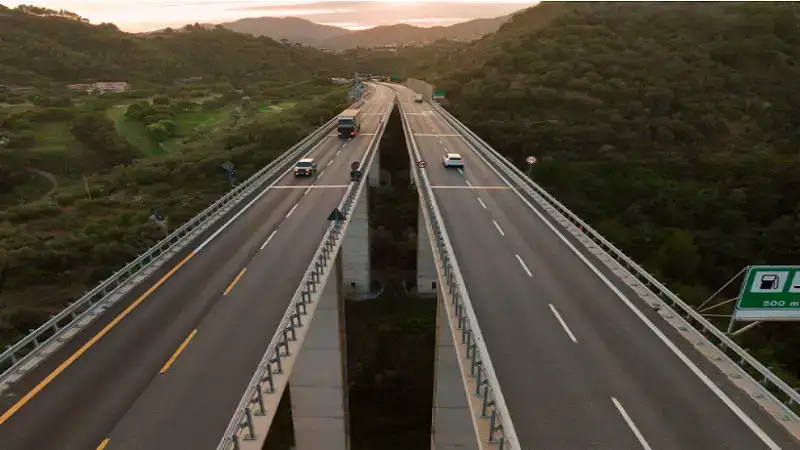Roadway safety is no longer about copper gladly responding to accidents, but it is about avoiding accidents altogether. Highway safety management is rapidly becoming at the forefront of the priorities of businesses and agencies in infrastructure, transportation, and in the protection of the well-being of the population. And it can be made very easy with the proper kind of technology and knowledge.The modern way of approaching the subject of highway safety is data-based, visual, and projective. With this shift comes the possibility of making more informed decisions, having shorter response times, and improved outcomes across the board of anyone who uses the road.
The reason why data is the basis of safer highways
Any credible safety strategy should begin with the provision of good and prompt data. You must be aware of what, where and why of what is going on. That contains road conditions, weather trends, collision reports as well as traffic flow.All of this information is pulled together using modern devices such as highway safety management platforms and made readable and easily analyzed in visual formats. With sensor data, mapping technology, and real-world imagery, decision-makers are able to detect areas of problems and act on them very quickly.
Preventing risk instead of crashing
The majority of the road hazards do not spring out of the blue. The existence of bad intersections, inappropriate signage, and old-type road designs, among other factors, may lead to accidents long before the incidents occur. The powerful safety management system is useful in signaling these hazards ahead.You do not have to wait until the patterns are interpreted with reports, but you can actively track and evaluate road conditions and access live visuals and metrics. It is then easier to give priority to the safety upgrades in the areas where they are most required.
Making smarter, quicker planning decisions
Highway safety is a factor of time. It takes a longer time to evaluate risks or implement the changes, and the longer the bench period, the company exposes its employees to harm. A visual aid connected to traffic statistics enables you to get out of analysis and into execution at an increased speed.This does not only save time–it saves lives. It also saves on those costs associated with reactionary repairs and emergency management.
Increasing the public trust by being transparent
Trust is developed when individuals witness that local governments and businesses are striving to come up with safer roads. When the changes are founded on evidence and graphic images, then the benefits of public involvement will be enhanced.Using digital tools, you can demonstrate to residents what and why something is being improved (a new guardrail, a change of signal, or an intersection redesign). Such transparency generates safety support and contributes to the community’s feeling engaged.
Making safety a part of wider objectives for infrastructure
It should not be a separate discussion on safety, but should also be integrated in all infrastructure decision-making. It can be a new road, an upgrade of some maintenance work, or an upgrade of a tech solution, but in any case, safety must be considered early on.Planners will be able to visualize the effects of every change on safety by means of visual interfaces and data models. This prevents wasteful oversights and makes sure that each phase of the development upgrades, and not disenfranchises, the road safety.
Limiting the liability of both the private and the public stakeholders
Accidents are not only life-threatening, but legal and other financial implications. To the cities, contractors, and transport agencies, having the capability to portray active safety initiatives can help significantly in liability litigation.Highway safety management system gives documentation of the risk level known, interventions to be implemented, as well as project schedules. This financial accountability history favors displaying responsibility and minimizing liability when matters of law may arise.
An easier process of meeting safety regulations
The Federal and state regulations regarding roadway safety are becoming increasingly complex. Administrative responsibility may be excessive, starting with crash data reports and adhering to design standard requirements.This is easier with the help of technology. With automatically gathered and systemized data in a centralized repository, it is simpler and less time-consuming to report. This saves on the resources used on actual safety measures, instead of paperwork.
Empowering field-level teams to provide able visuals
On-the-ground engineers and inspectors must be given straightforward instructions. They have the information they need to take good actions quickly and confidently by using high-quality street-level imagery and interactive maps.Crews do not have to be guided by old-fashioned blueprints or general guidelines, but will get to see precisely what they will be able to expect. This enhances the improvement of efficiency and the quality of work done in the field.
And what wiser highway traffic says thus
An improved approach to the safety of highways serves not only as a tick in a box but also protects against fewer accidents on the runway; it brings more confidence to the population, and also, there is resource optimization. It can assist agencies and companies to leave the reactive and go to the proactive and utilize tools that are fast, self-intuitive, and data-backed.Once you turn safety into a part of your everyday activities, and a tech-connected and integrated one, you get a whole lot safer roads and a more potent progression of outcomes.
